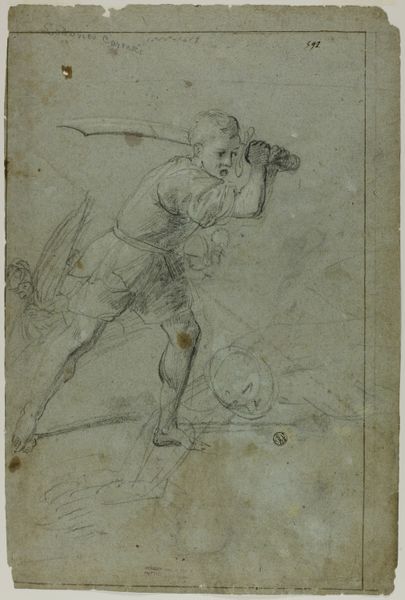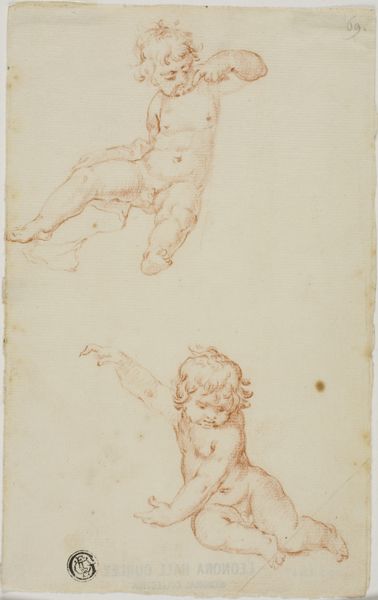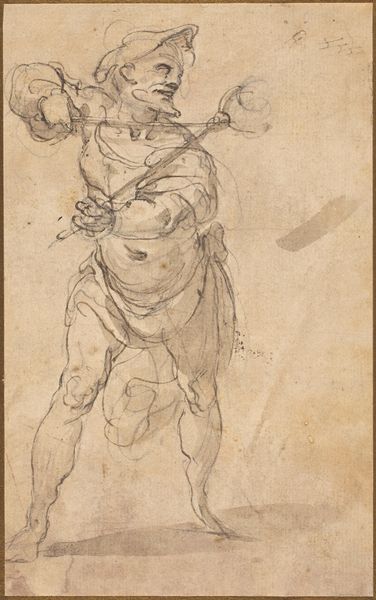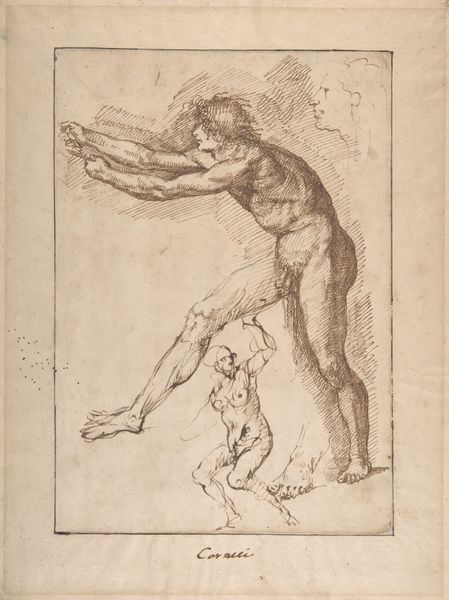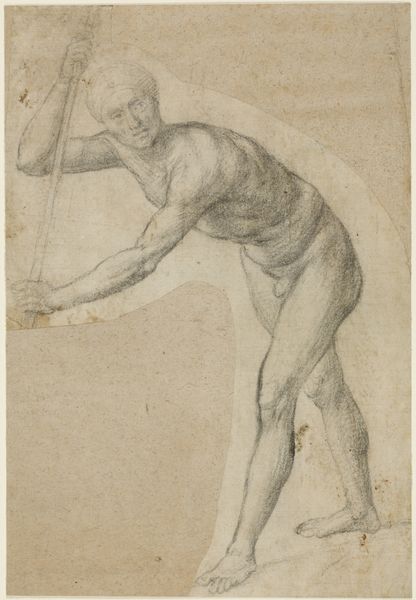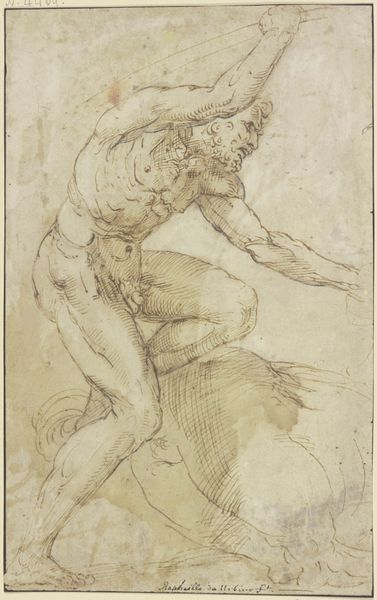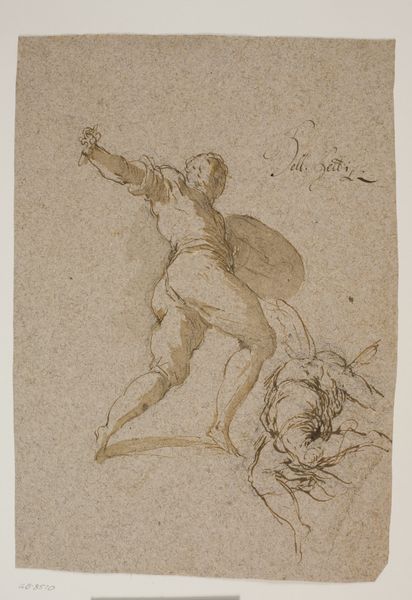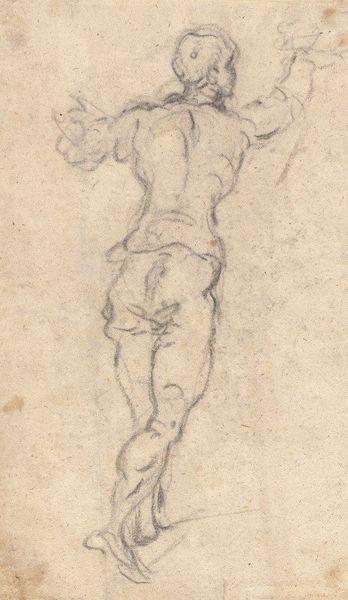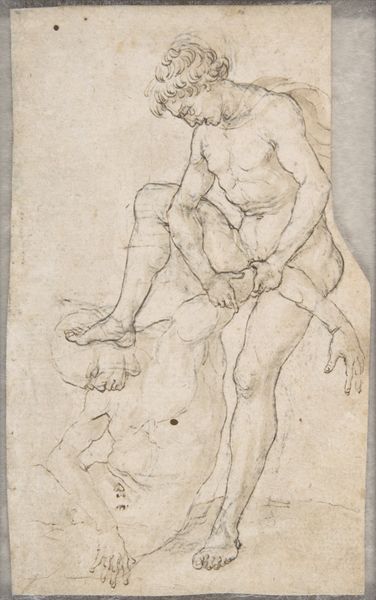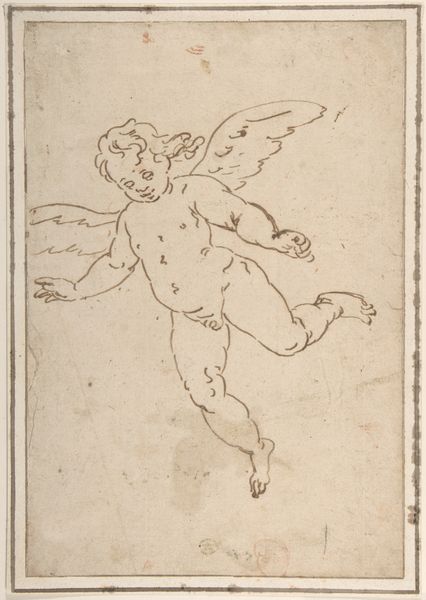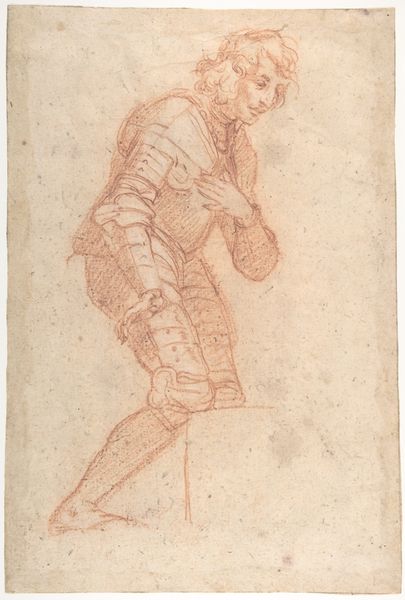
drawing, ink
#
drawing
#
figuration
#
11_renaissance
#
ink
#
nude
Dimensions: 111 mm (height) x 74 mm (width) (bladmaal)
Editor: This ink drawing, “Winged Putto with a Trident,” attributed to Battista Franco and dating roughly from 1498 to 1561, depicts a chubby, nude cherub in flight. There’s an almost unsettling intensity in its expression, like it's mid-tantrum despite wielding a miniature trident. What layers are at play here? Curator: It’s interesting that you picked up on the tension between the cherubic ideal and the apparent frustration in its face. I wonder, does this unexpected aggression reframe our understanding of power during the Renaissance? Consider the historical context – these images of putti were commissioned by the elite, displayed in domestic spaces. Is Franco subtly commenting on the volatile nature of power, even in its seemingly innocent forms? Editor: So you're saying that these figures may not have been simply decorative or sentimental? Curator: Precisely. This could be an articulation of the complexities inherent in structures of dominance, masquerading within the accepted visual language of the time. Is there something revolutionary encoded in the unexpected scowl of a winged infant? We should also be careful not to divorce art history from current trends. Editor: It's fascinating how a simple drawing can invite such complex readings about gender and power dynamics. It almost challenges our modern assumptions about idealized childhood. I will keep a closer watch of how these representations shift in modern times. Curator: Indeed, the real power of art lies in its ability to disrupt narratives. This little putto makes us question everything, no?
Comments
No comments
Be the first to comment and join the conversation on the ultimate creative platform.
